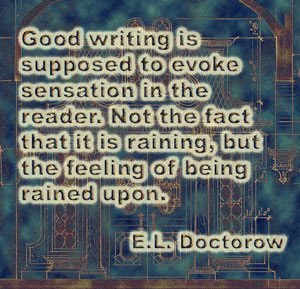
A Writer’s Dance of Emotions
 Emotions are key to how a writer is perceived by the readers they desire. Write a fiction book, or any book really, and you will find that the most beloved of characters are the ones whom the readers care about. It’s easy to write a 700 page novel created with black ink and paper and not have a single buyer.
Emotions are key to how a writer is perceived by the readers they desire. Write a fiction book, or any book really, and you will find that the most beloved of characters are the ones whom the readers care about. It’s easy to write a 700 page novel created with black ink and paper and not have a single buyer.
It’s even easier to get a few bad reviews complaining that you have no right to be a writer and that you could do better…. and the reviewers expect you to smile and take it.
That’s the problem with writing — it’s a dance of emotions that never ends. You can be happy about your work one day and hate the life your book out of it the next. You might have a day where the “book writes itself” only to come back later and realize that it didn’t quite do this.
 You might want to imitate a particular writer for a while, only to find out that this writer is great in one thing, but they are (or were) a one trick pony who keeps on writing the same thing; they have a great editor, but they can’t be bothered to continue to write beyond the end of the book or series.
You might want to imitate a particular writer for a while, only to find out that this writer is great in one thing, but they are (or were) a one trick pony who keeps on writing the same thing; they have a great editor, but they can’t be bothered to continue to write beyond the end of the book or series.
The dance of emotions is tough on any writer. It’s a battle to get your name out there and, when you do, to keep it out there. It’s a battle to find time to write, and you feel guilty about that. You can feel drained and elated on the same day.

You probably don’t want anyone, least of all me, to mention that dreaded “p” word. That word every writer both adores and dreads. Publishing isn’t for the faint of heart, and it takes much effort and emotion to do it.
We’ve talked about inspiration and what it does for writers, but the fact remains that it doesn’t do anything if you don’t put it into action. Logically, we know that the emotions, the inspiration we feel for our writing is good for us. Logically we can write those 500 words per day. Logically we can get a book published. Logically, we can market and sell our books with ease.

Logic, however means nothing, however, to a reader.
Sure, there are the non-fiction books that people read, and some of them are drier than a fiction books of the same length; however, they hold the same secret as fiction writing: emotions. The bestsellers in non-fiction have one thing in that sets them apart: readers.

A good example of a book evoking emotions is The Bully Pulpit. The most important thing about this is not the fact that the content is well researched (it is) it is not the fact that the book is written in easy to understand language (about a grade 9 reading level), it is because Goodwin draws us in and makes us see the people, and the history, and the parallels in our lives.
It dances with our emotions. It encourages writers to see things that go beyond emotions but also show us that there is a “dance” that never ends.
You May Also Like

Leadership, Passion and Hope
April 22, 2015
The Reason You Need to Publish
July 4, 2011

